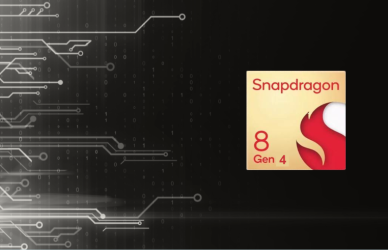Top Two Main Functions of Computer Design
Top Two Main Functions of Computer Design. In computer design, there are four major components: Architecture, Processor, User Interface, and Languages.
- Each of these components performs a specific function.
- Each of these components is important to a computer’s operation.
- Each one is essential to achieve the ultimate level of performance and functionality.
- Each is important for a variety of reasons.
- To help you understand them better, let’s briefly discuss what each one does.
Architecture
In a nutshell, architecture describes the physical attributes of a computer. It also includes how the computer works and how it interacts with other computers. Computer architecture involves analyzing existing implementation technologies and using them to design the best computer possible. Computer architecture is often referred to as microarchitecture but can be described in many ways. Here are a few examples of how architecture is used in computer design.
Computers are generally divided into two major categories, hardware, and software. Hardware includes all of the components that allow a computer to run, such as the monitor, hard drive, and keyboard. Software design is the program that controls hardware and serves as the interface between the hardware and the user.
Computer design encompasses the two distinct disciplines of computer hardware and software engineering. The external design of a computer consists of the computer shell, monitor, and keyboard, while the internal design includes the circuit diagram and system software. Both of these elements are essential in computer use, and a unified design makes it easier to understand.
The goal of computer architecture is to maximize performance without sacrificing power efficiency. Higher power efficiency usually means lower speed, but it also means higher cost. A typical measurement of power consumption in computer architecture is MIPS/W, which stands for millions of instructions per second per watt. These factors often trade off the performance of a computer to make it cheaper to produce. A well-balanced computer system will have a constant rate of data. The form of the computer depends on the constraints and goals of the design.
In addition to software and hardware, computer architecture has other functions. Computers can be configured using logical standards or by assembling strategies. They also provide practical experience in different fields. The software and hardware should work well with each other. For example, a system should be able to handle read and write operations in the same memory. This is done with different types of architecture. If there is a system that consists of a CPU with multiple cores, it will have many more different types of architectures.
Processor
A computer’s processor is the circuit board that executes instructions on behalf of the software it runs. A modern processor can perform millions of instructions per second. It is considered the “main chip” of a computer and is difficult to break down. Processors control the logic used to run programs and perform calculations. Typically, the CPU has one core, and the rest are peripherals. Top Two Main Functions of Computer Design The speed at which a processor can process data depends on its processing ability.
The CPU also contains many different registers and memory cells, which are used to store data. The registers serve as fast on-chip memories that can store binary values in 64 or 32-bits. The registers store the information during the process of manipulation. Registers can be dedicated or general purpose. Some computers have up to 16 general purpose registers. General-purpose registers are not specific to any particular function.
To increase the efficiency of the CPU, modern processors are designed with additional support structures. Specifically, they help the CPU with communications protocol translation. Protocol processors translate data between computers or over the Internet. The Internet is composed of seven layers of protocols. Each layer must be addressed before the next can be addressed. A processor that handles these layers of protocols helps the CPU perform other tasks without putting a lot of strain on the CPU.
The CPU is comprised of four main components: the arithmetic and logic unit (ALU), the control unit, and the memory. A CPU is the heart of a computer and a crucial part of any system. It is responsible for processing information, creating files and storing information, and performing tasks. It can run different types of programs and be manipulated by the user. This is where it gets its physical form.
User interface
The user interface is a critical aspect of a computer system. It determines how a computer works and meets the expectations of its users. There are two levels of user interface design: lexical and semantic. Lexical design involves defining and describing primitive hardware operations and functions, while semantic design deals with the behavior of the system as it relates to the user.
Both levels are equally important and focus on a system’s ability to perform every task with ease. A proper UI starts by identifying the user’s primary tasks and problem domain. From there, it works from the user’s capabilities, limitations, and environment. Each task is categorized by its complexity, machine, or user. A user can identify a task by its level of abstraction, and the task can be subdivided further by task complexity. Users tend to recognize objects and actions by their appearance and function, and a predictable layout improves task completion and efficiency.
The evolution of user interface design has spanned four eras. From the age of tools and machines to the age of software and the self, the field has become increasingly sophisticated. Throughout the years, rapid growth has required designers to explore the nature of human interaction, from simple communication to complex interactions with a computer. Before computers, humans communicated with drawings on stone surfaces or by using hieroglyphs.
These symbols were highly symbolic and eventually evolved into art, writing, and storytelling. When designing a user interface, a computer must be intuitive to use. A good user interface must be easy to use and not bloated with unnecessary elements. Users should be able to recognize a familiar element within the interface without having to search for it. A clear, efficient, and consistent user interface will help users interact more effectively and enjoy the process more. And a great interface is more likely to increase productivity, not decrease it.
Languages
There are many different languages that can be used in computer design. Some are used for specific purposes, and some are used for general-purpose programming. Regardless of the reason, there are several things that are important to keep in mind when selecting a language.
Consider the audience for the language you are developing. Are they artists, graphic designers, AI researchers, scientists, system programmers, or something else? These are all factors to consider, as well as the way you design the language.
Usually, languages are more complex and less efficient than other programming languages. However, recent improvements in hardware have resulted in lower costs and higher performance ratios. By focusing on readability, reusability, and program structure, language designers can take advantage of the trend toward cost-effectiveness and efficiency. Ultimately, simplicity should be the primary goal. However, if the complexity of the language is too much for the user, it may not be the best choice for the computer.
Programming languages are necessary to allow computers to process large amounts of information. Without them, you would have to spend too much time placing randomized numbers in a particular order. This process would take too long and likely result in errors.
Today, dozens of programming languages are used in industry. Python is one such language and is widely used for Rapid Application Development (RAD). Civilization 4 uses Python for its inner logic. You can also use this language to write your own programs.
The language BASIC was designed at Dartmouth College in the mid-1960s. It was initially intended for novices and time-sharing computers. Its notation and data structures made it easy to understand and translate. Also had a lot of benefits for early personal computers. In recent years, incorporated many of the control and data structures used in other languages. It is no longer user-friendly for beginners.
Organization
One of the main functions of a computer is organization. Its basic structure consists of a number of interconnected subsystems. These systems can be grouped based on the relative speed of different approaches, the expected frequency of use, and the cost of special units. These systems also manage data, such as input/output. However, one of the main issues of computer design is how to organize these subsystems.
Computer architecture deals with the overall structure of the computer and its functional behavior. It includes the instruction set, the number of bits for different data types, the technique of addressing memory, and many other factors. Top Two Main Functions of Computer Design.
The organization is the process of defining how these systems interact to realize the architectural specification. This step is the most difficult to master, but it is essential to understand the details of how your computer works. Listed below are the three major computer design functions


